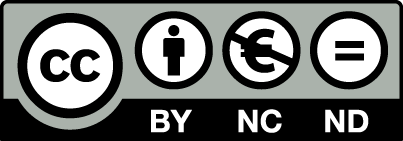Please use this identifier to cite or link to this item:
https://hdl.handle.net/2445/195858Full metadata record
| DC Field | Value | Language |
|---|---|---|
| dc.contributor.author | Fores i Planells, Elisenda | - |
| dc.contributor.author | Bofill Mas, Silvia | - |
| dc.contributor.author | Itarte, Marta | - |
| dc.contributor.author | Martínez-Puchol, Sandra | - |
| dc.contributor.author | Hundesa Gonfa, Ayalkibet | - |
| dc.contributor.author | Calvo, Miquel (Calvo Llorca) | - |
| dc.contributor.author | Borrego, C.M. | - |
| dc.contributor.author | Corominas, L.L. | - |
| dc.contributor.author | Gironès Llop, Rosina | - |
| dc.contributor.author | Rusiñol Arantegui, Marta | - |
| dc.date.accessioned | 2023-03-23T18:38:43Z | - |
| dc.date.available | 2023-05-31T05:10:26Z | - |
| dc.date.issued | 2021-05 | - |
| dc.identifier.issn | 0048-9697 | - |
| dc.identifier.uri | https://hdl.handle.net/2445/195858 | - |
| dc.description.abstract | Quantitative measurements of the severe acute respiratory syndrome coronavirus 2 (SARS-CoV-2) in rawwastewater have been implemented worldwide since the beginning of the pandemic. Recent efforts are being made to evaluate different viral concentration methodologies to overcome supplier shortages during lockdowns. A set of 22-wastewater samples seeded with murine hepatitis virus (MHV), a member of the Coronaviridae family, and the bacteriophage MS2, were used to characterize and compare two ultrafiltration-based methods: a centrifugal ultrafiltration device (Centricon® Plus-70) and the automated concentrating pipette CP-Select¿. Based on the recovery efficiencies, significant differences were observed for MHV, with Centricon® Plus-70 (24%) being the most efficient method. Nevertheless, concentrations of naturally occurring SARS-CoV-2, Human adenoviruses and JC polyomaviruses in these samples did not result in significant differences between methods suggesting that testing naturally occurring viruses may complement the evaluation of viral concentration methodologies. Based on the virus adsorption to solids and the necessity of a pre-centrifugation step to remove larger particles and avoid clogging when using ultrafiltration methods, we assessed the percentage of viruses not quantified after ultrafiltration. Around 23% of the detected SARS-CoV-2 would be discarded during the debris removal step. The CP-Select¿ provided the highest concentration factor (up to 333×) and the lowest LoD (6.19 × 103 GC/l) forMHV and proved to be fast, automatic, highly reproducible and suitable to work under BSL-2 measures. | - |
| dc.format.extent | 7 p. | - |
| dc.format.mimetype | application/pdf | - |
| dc.language.iso | eng | - |
| dc.publisher | Elsevier B.V. | - |
| dc.relation.isformatof | Versió postprint del document publicat a: https://doi.org/10.1016/j.scitotenv.2020.144786 | - |
| dc.relation.ispartof | Science of the Total Environment, 2021, vol. 768, num. 144786, p. 1-7 | - |
| dc.relation.uri | https://doi.org/10.1016/j.scitotenv.2020.144786 | - |
| dc.rights | cc-by-nc-nd (c) Elsevier B.V., 2021 | - |
| dc.rights.uri | https://creativecommons.org/licenses/by-nc-nd/4.0/ | - |
| dc.source | Articles publicats en revistes (Genètica, Microbiologia i Estadística) | - |
| dc.subject.classification | SARS-CoV-2 | - |
| dc.subject.classification | Ultrafiltració | - |
| dc.subject.other | SARS-CoV-2 | - |
| dc.subject.other | Ultrafiltration | - |
| dc.title | Evaluation of two rapid ultrafiltration-based methods for SARS-CoV-2 concentration from wastewater | - |
| dc.type | info:eu-repo/semantics/article | - |
| dc.type | info:eu-repo/semantics/acceptedVersion | - |
| dc.identifier.idgrec | 711251 | - |
| dc.date.updated | 2023-03-23T18:38:43Z | - |
| dc.rights.accessRights | info:eu-repo/semantics/openAccess | - |
| Appears in Collections: | Articles publicats en revistes (Genètica, Microbiologia i Estadística) | |
Files in This Item:
| File | Description | Size | Format | |
|---|---|---|---|---|
| 711251.pdf | 4.79 MB | Adobe PDF | View/Open |
This item is licensed under a
Creative Commons License



